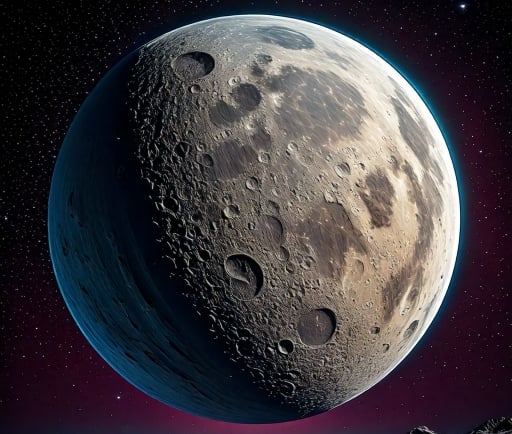Unraveling the Kepler-1625b-i: The Largest Exomoon Candidate


Introduction to Kepler-1625b-i
The discovery of exoplanets has revolutionized our understanding of the universe, opening up new frontiers in astronomy and planetary science. Among these discoveries, the largest exomoon candidate, known as Kepler-1625b-i, stands out as an intriguing object of study. Orbiting the massive exoplanet Kepler-1625b, this neptune-sized moon invites speculation and analysis, although its status as a confirmed moon remains unverified.
The Characteristics of Kepler-1625b-i
Kepler-1625b-i, positioned in a distant star system approximately 8,000 light-years from Earth, is an exceptional candidate for the title of the largest exomoon known to date. This moon is hypothesized to be about the size of Neptune, making it particularly fascinating when considering its orbit around a Jupiter-sized planet, Kepler-1625b. The sheer size and potential characteristics of Kepler-1625b-i pose significant questions regarding its formation, composition, and the gravitational forces at play in such a system.
Significance of the Discovery
The implications of Kepler-1625b-i's discovery extend far beyond mere curiosity. If confirmed, it would challenge existing theories surrounding moon formation and stability. The presence of a large moon like Kepler-1625b-i raises questions about the conditions that allow such celestial bodies to exist so far from their parent star. What processes contributed to its development? How does it maintain a stable orbit around its host planet?
Research into Kepler-1625b-i also contributes to our broader understanding of planetary systems. It provides a unique opportunity to explore the conditions necessary for diverse exoplanetary environments and the role of moons in sustaining life. As the search for habitable worlds continues, moons like Kepler-1625b-i may play a crucial role in these cosmic inquiries.
The Path Forward
Confirming Kepler-1625b-i as a true moon will require further observational data and advanced astronomical techniques. Current analyses utilize space telescopes and other sophisticated technologies to gather evidence of its existence and characteristics. As research progresses, scientists aim to construct a more comprehensive picture of this celestial body and its interactions with Kepler-1625b.
In conclusion, the exploration of Kepler-1625b-i underscores the richness of the cosmos and the ongoing quest to uncover the secrets of our universe. As we continue to study this largest exomoon candidate, we may very well be on the brink of significant revelations that could reshape our understanding of moons in exoplanetary systems.
